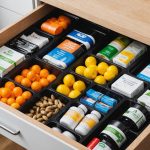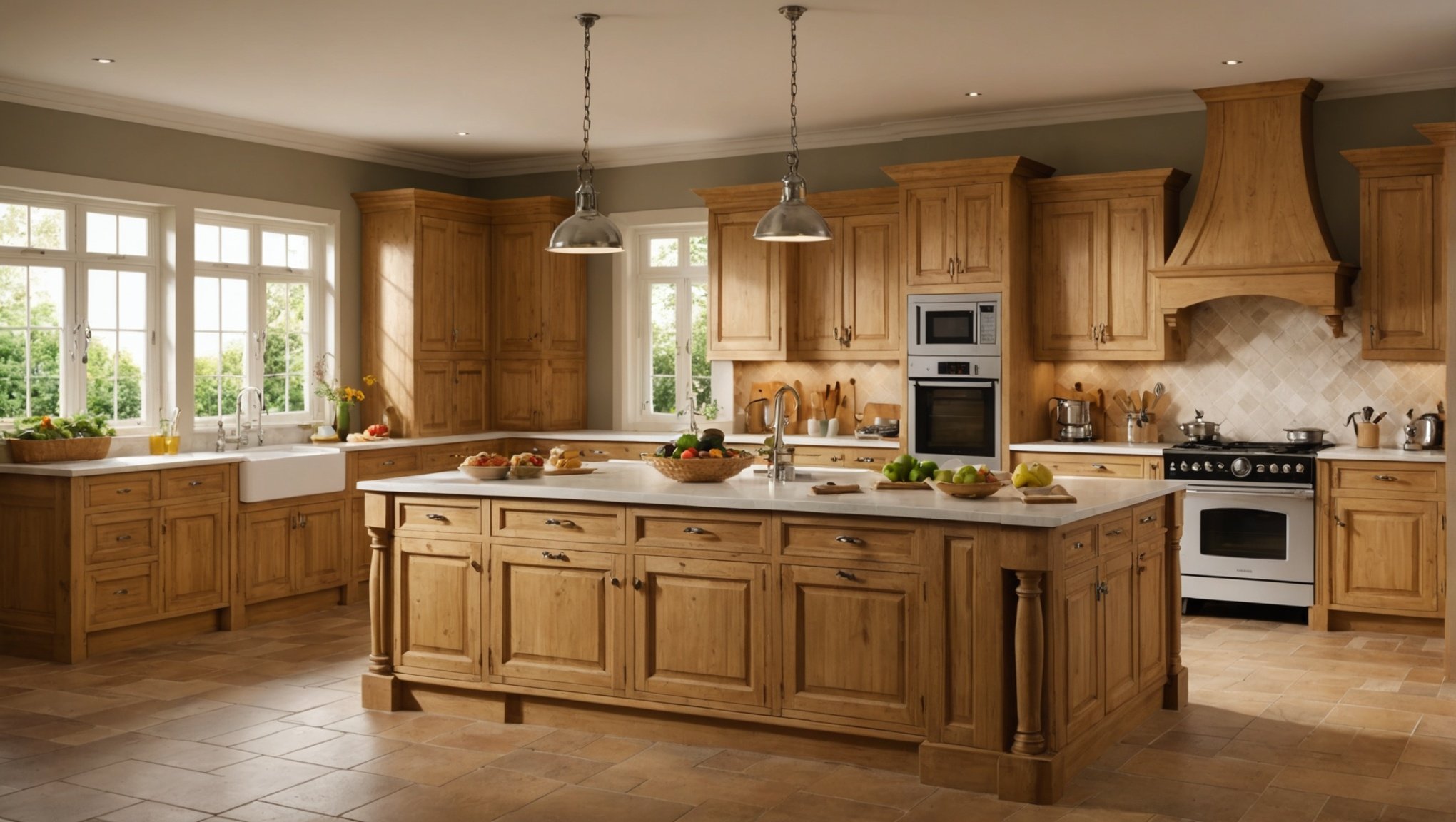Maintaining and cleaning wooden kitchen cabinets is an essential job in any UK household. Over time, these essential pieces accumulate dust, grease, and grime, which can damage their aesthetics and functionality. If you do not promptly attend to this, it might result in permanent staining or even degradation of the wood. To avoid such issues, you need to know the best practices for cleaning and maintaining your wooden cabinets. This article will guide you through the necessary steps to ensure your cabinets stay in the best possible condition. It will cover cleaning techniques, the best cleaning solutions, and maintenance tips.
Cleaning Wooden Kitchen Cabinets
Your kitchen cabinets, especially those near the stove and sink, are exposed to a variety of elements every day. From grease splatters to dust and water splashes, there are many sources of dirt and stains. Moreover, frequent touch by dirty hands can leave impurities that can darken the wood over time. Therefore, cleaning becomes a vital task to keep them looking their best.
This might interest you : Which types of kitchen tiles are easiest to clean in a UK home?
When cleaning your kitchen cabinets, you will need a few essential tools. Get your hands on a soft, clean cloth, warm water, mild dish soap, white vinegar, and a bucket. Begin the cleaning process by removing any items from your cabinets. This will prevent any accidental damage or soiling of your belongings.
Firstly, use the cloth to dust off the dry dirt. Remember, dusting is a crucial initial step as it prevents dust from turning into a muddy mess during the subsequent wet cleaning.
Also read : Which types of kitchen tiles are easiest to clean in a UK home?
Next, create a solution of warm water and mild soap. Dip the cloth in this solution and wring it out so it’s damp, not soaking. Use this to wipe down the cabinets, paying extra attention to handles and areas that are touched often.
If you’re dealing with stubborn grease stains, vinegar is your best bet. Make a 50/50 solution of vinegar and warm water. Apply this solution onto the grease stain and leave it for a few minutes before wiping it clean.
The Importance of Drying Your Cabinets Properly
After you’ve done a thorough job cleaning your kitchen cabinets, it’s vital to dry them properly. Leaving your cabinets wet can lead to water damage, which might in turn cause the wood to warp or discolour.
To dry your cabinets, use a clean, dry cloth to wipe down all the surfaces. Ensure you get into all the nooks and crannies to prevent any water from pooling and causing damage.
Daily Maintenance for Your Wooden Cabinets
Keeping your cabinets clean is not just about periodic deep cleaning. It’s also about maintaining them daily. A simple wipe down at the end of each day can go a long way in keeping your cabinets looking their best.
For daily maintenance, you don’t need any special cleaner or solution. A soft cloth and warm water will do. Make sure to dry the cabinets properly after each cleaning. This simple daily task can significantly reduce the need for deep cleaning and prolong the lifespan of your wooden cabinets.
Choosing the Best Cleaners for Your Cabinets
Choosing the right cleaners for your cabinets is of utmost importance. Using unsuitable cleaners might damage the finish of your wooden cabinets or even the wood itself.
For the best results, opt for cleaners made specifically for wooden surfaces. They are gentle on the wood and won’t damage the finish. Always remember to test any new cleaner on a small, hidden area first to ensure it doesn’t discolor or damage the wood.
Finishing Touches for Your Cabinets
Once the cabinets are clean and dry, you can add a finishing touch to give them a shine and protect them from future stains. Applying a light coat of furniture polish or wax can provide a protective barrier and restore the shine of your cabinets.
Remember, though, not to overdo it. Too much polish or wax can attract dust and make the cabinets look cloudy. Also, always use a soft cloth to apply and buff the finish to avoid scratching the surface.
In conclusion, maintaining and cleaning your wooden kitchen cabinets does not have to be a daunting task. With regular cleaning and proper maintenance, your cabinets can stay in prime condition for many years. So grab your cleaning supplies and start taking care of your kitchen cabinets today.
Making Your Own Natural Cleaning Solutions
Having discussed the importance of choosing the right cleaners for your cabinets, it’s worth noting that you can also make your own natural cleaning solutions. Homemade cleaners can be just as effective and are often gentler on your wood kitchen cabinets, not to mention more environmentally friendly.
To make a natural cleaning solution for your cabinets, you will need baking soda, white vinegar, and warm water. These ingredients are ideal for tackling stubborn grease and grime.
Here’s a simple recipe: mix 1 part of vinegar with 2 parts of warm water and a tablespoon of baking soda. The vinegar and baking soda combination works wonders in breaking down grease, while the warm water helps in wiping away the grime. Always remember to test the solution on a hidden part of your cabinet before applying it fully to ensure it doesn’t cause any discoloration.
When it comes to cleaning glass cabinet doors, a mixture of equal parts white vinegar and warm water can leave your glass sparkling clean. Simply spray the solution onto the glass and wipe it down with a microfiber cloth for the best results.
Using the Right Cleaning Tools
In addition to the right cleaning solutions, it’s equally important to use the right cleaning tools. Proper tools can make the cleaning process easier and ensure you don’t accidentally damage your cabinets.
When cleaning your kitchen cabinets, a microfiber cloth is your best friend. This soft cloth is gentle on wood and is excellent at lifting and trapping dirt, grease, and dust. Microfiber cloths are also highly absorbent, making them great for drying your cabinets after cleaning.
Use a damp cloth for the initial wiping down of your cabinets and a microfiber cloth for drying them. For those hard-to-reach nooks and crannies, consider using a soft toothbrush. It allows you to reach these areas without risking any damage.
Conclusion
Maintaining and cleaning your wooden kitchen cabinets does not have to be an overwhelming task. Armed with the right knowledge, tools, and cleaning products, you can keep your kitchen looking pristine and extend the lifespan of your cabinets.
Remember to regularly dust and wipe down your cabinets to prevent the buildup of grease and grime. Opt for gentle, wood-friendly cleaning solutions—whether store-bought or homemade—and always dry your cabinets properly after cleaning.
Proper maintenance is about more than just keeping your kitchen looking good; it’s about preserving the quality and functionality of your cabinets. With these tips in mind, your cabinets will remain a beautiful and integral part of your kitchen for years to come.






